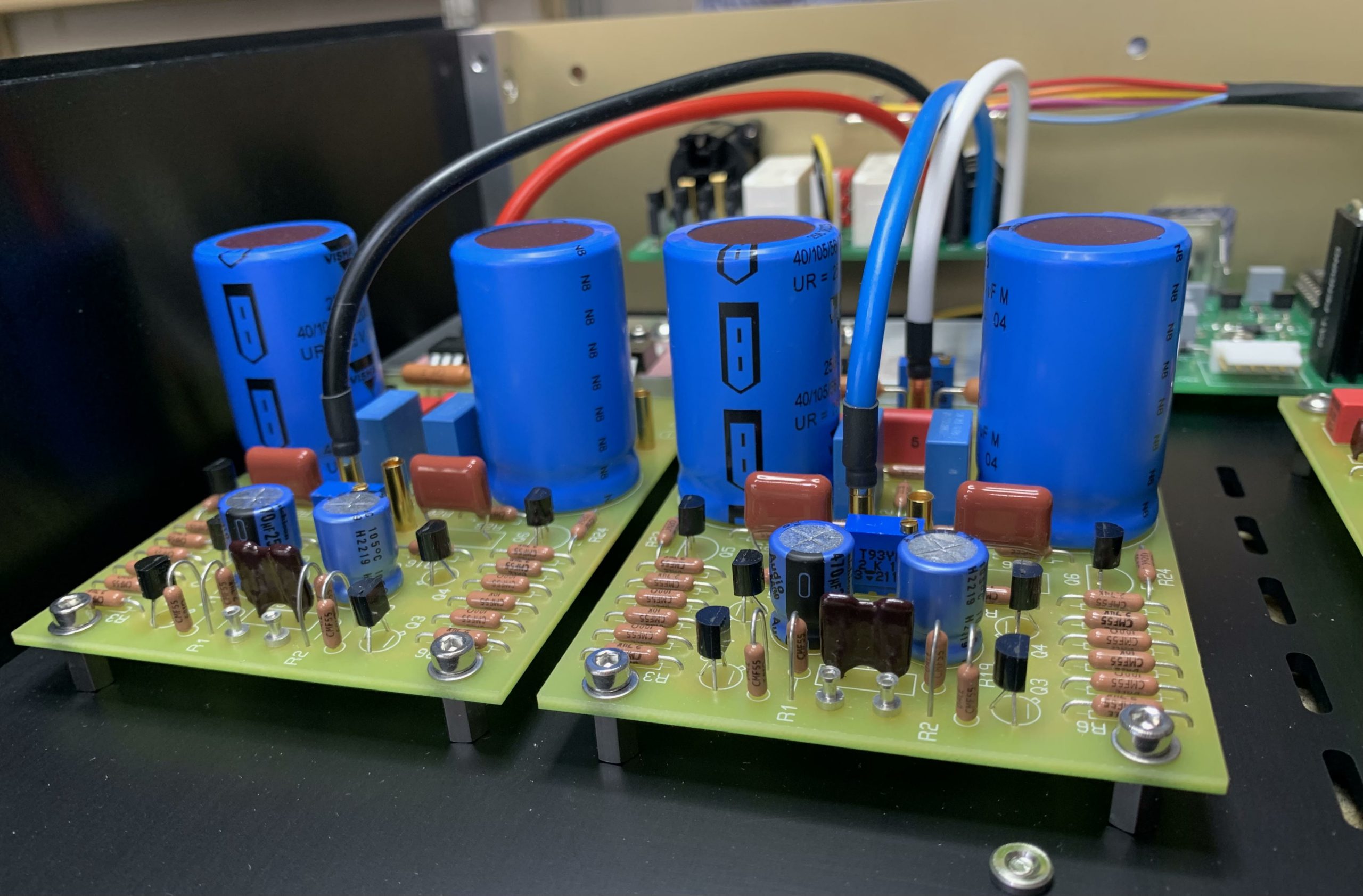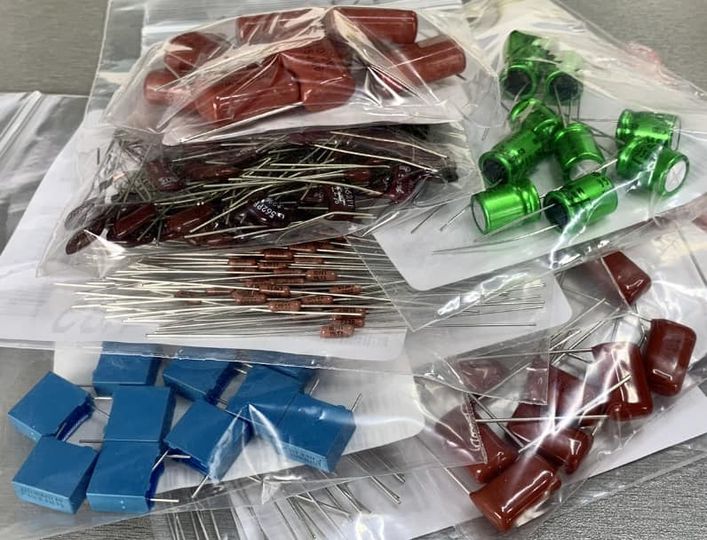ALL ABOUT KALLYSTE
QUESTIONS & ANSWERS
Who Is KALLYSTE’s Designer?
Pascal Curin is born into an industrial family in the eastern region of Lorraine – France, where music was also very much a part of life, Pascal Curin was attracted to the field of electronics from an early age, and quite naturally its applications to audio. Unsatisfied with the amplification systems available to him at the time, he began his own research in this field at the age of twelve.
With a double engineering degree in electronics and electrical engineering, Pascal Curin chose to confirm the path of research in applications that led him to work on behalf of leading companies or institutes such as Eurocopter, Dassault, Eurotorp, and Ifremer.
In 2012, having continued to develop his audiophile work, he decided to devote himself exclusively to the fruit of four decades of demanding experience. KALLYSTE was born, in the service of music and audiophiles, an approach where the greatest rigor of work leads to the greatest freedom of expression.

What We Hear By Musicality?
Musicality is a word that is unfortunately overused in audiophile circles, where it has lost its original meaning: what makes the difference between an ordinary sound and a sound used in a musical phrasing.
A musical sound is defined by its frequency, duration and intensity. The frequency (corresponding to a note) is fixed in audiophile reproduction (amplification does not play out of tune…), but the other two parameters, initiated by the musician, can be altered by the poor quality of a reproduction system (extremities of sound and masked nuances).
The attack is the key to identifying the timbre of an instrument. Silence, speed and clarity are therefore essential. The richness of the timbre lies in the quantitative and qualitative respect for the deployment of harmonics: that there is no lack of them, that their deployment is not confused.
KALLYSTE amplifiers are designed to develop a natural harmonic gradation.
What Are The Foundations Of KALLYSTE’s Design?
KALLYSTE has been in existence since 2012, but benefits from a lifetime of research.
The motivation of Pascal Curin’s creation is twofold: a passion for electronics, and the desire to push it as far as possible in order to best serve the music, in an approach of musical veracity. This is why KALLYSTE is in constant correlation with the world of musicians and sound technicians, some of whom consult us to test their recordings and check that there is no break between source and reproduction. KALLYSTE has also produced an amp for instruments. The desired result is to get as close as possible to the authenticity of live sound, in the reproduction of harmonics and their gradation, the naturalness and richness of timbres, and dynamic differences.
The principle: add nothing, subtract nothing. No over-coloring, no masking, and a totally balanced reproduction of the spectrum, an image that is clearly present without focusing or projection. As a result, KALLYSTE electronics combines characteristics that are sometimes considered opposites: deep silence and transparency (no dullness), speed and impact without aggression, a very wide bandwidth but high frequencies rich in timbre right to the top of the spectrum, richness of timbre and great naturalness.
 There are no compromises when it comes to design, which is carried out in this order: studies, diagrams, circuits, choice of components (of the highest quality and with the best characteristics), layout (position of the elements in relation to each other), which determines the dimensions of the device, mechanical study (integration into the cabinets and design of the latter), and then, only at the end of the study, the aesthetic design. The PCBs – printed circuit boards – are produced without the aid of automatic routing for optimum positioning of components and tracks, with the aim of eliminating any induction problems that might adversely affect sound quality.
There are no compromises when it comes to design, which is carried out in this order: studies, diagrams, circuits, choice of components (of the highest quality and with the best characteristics), layout (position of the elements in relation to each other), which determines the dimensions of the device, mechanical study (integration into the cabinets and design of the latter), and then, only at the end of the study, the aesthetic design. The PCBs – printed circuit boards – are produced without the aid of automatic routing for optimum positioning of components and tracks, with the aim of eliminating any induction problems that might adversely affect sound quality.
What are KALLYSTE’s distinctive technical features?
The choice of Class A/B is a response to the fact that Class A results in energy loss that is incompatible with the desire for concentrated efficiency, and that Class D requires solutions that are incompatible with maximum transparency in order to avoid the nuisance inherent in its principle. Class A/B is therefore the most favorable option.
The principle is to design the most streamlined schemes, for the most direct efficiency. A lot of Hi-End equipment today relies on over-complexity to be perceived as more sophisticated, but this is not the best solution for maximum efficiency, because the more components you add, the more interactions you have to manage, and in the end it’s the result that becomes cluttered. Contrary to popular belief, it is actually more difficult to purify schematics, because it requires a much deeper understanding of the relationship between audio signal and schematic operation. KALLYSTE equipment can therefore be described as a concentrate of direct efficiency.
Almost all High Fidelity equipment using tubes is based on triodes. Pascal Curin has not taken this easy option and uses pentodes, which are more advanced tubes but require a more in-depth technical study to exploit their incomparable audio qualities.
The tubes selected are military grade, capable of withstanding considerably greater stresses than those required of them in KALLYSTE equipment.
The exemplary reliability of KALLYSTE products is partly due to the fact that the components, including the tubes, are used well below their maximum potential, which at the same time guarantees that resources are always comfortable, more than sufficient, and that the equipment is preserved. That’s why KALLYSTE products come with a 10-year guarantee.
The power supply uses rectifier tubes. Silicon rectifiers, commonly known as “diodes”, have the unfortunate habit of generating switching “peaks” that are detrimental to the quality of the current used to supply the various modules, whatever precautions are taken. These switching “peaks” are likely to generate odd-numbered harmonics that make listening hard and tiring.
The quality of silence, essential for high-quality listening, is achieved by choosing High-End components with very high tolerances and extremely low noise characteristics, used in uncompromising assemblies on PCBs made to KALLYSTE’s specifications.
Speed is no accident. It is due to rigorous electronic research and a series of methodical checks. It is clear that the upstream study of the schematics is decisive in obtaining this result. An amplifier’s speed is often at odds with its stability, and at KALLYSTE, the latter is achieved through in-depth research into original solutions developed in our research laboratory.
The way the sound of Kallyste products is hold is also the result of Pascal Curin’s desire for perfection.  Particular care is taken with the quality of the power supplies. We have systematically eliminated the use of switching power supplies in order to remain faithful to entirely analogue systems. The use of transformers made specifically for KALLYSTE to our specifications, and particularly careful filtering on PCBs capable of carrying very high currents, ensure remarkable stability in all registers, and remarkable transients without ever collapsing. Unlike many products on the market, KALLYSTE amplifiers are fully capable of reproducing ample, long-lasting bass without the slightest attenuation of high frequencies at the same time.
Particular care is taken with the quality of the power supplies. We have systematically eliminated the use of switching power supplies in order to remain faithful to entirely analogue systems. The use of transformers made specifically for KALLYSTE to our specifications, and particularly careful filtering on PCBs capable of carrying very high currents, ensure remarkable stability in all registers, and remarkable transients without ever collapsing. Unlike many products on the market, KALLYSTE amplifiers are fully capable of reproducing ample, long-lasting bass without the slightest attenuation of high frequencies at the same time.
The most powerful and fastest amplifier would be nothing musically if it didn’t deliver true, rich timbres. The quality of the timbres reproduced by KALLYSTE amplifiers is in fact the result of all the points previously mentioned.
How Is Manufacturing Carried Out?
The entire technical design and virtually all the manufacturing are carried out in the KALLYSTE workshop. The only components produced by outside parties are the printed circuits made by a French company, and the transformers manufactured to specifications by a European service provider.
The components are of the highest possible quality: aluminium to aerospace standards, electronic components with low noise levels and draconian characteristics, sorted and approved, and reputable brands (Vishay, Dale, Kemet, Panasonic, Nichicon, etc.). Just as much care is taken with the internal wiring (purity of metal and neutral insulators are favored).
The entire manufacturing process, overseen by Pascal Curin, is subject to constant self-checking. The equipment goes to the measuring bench for final adjustment.
